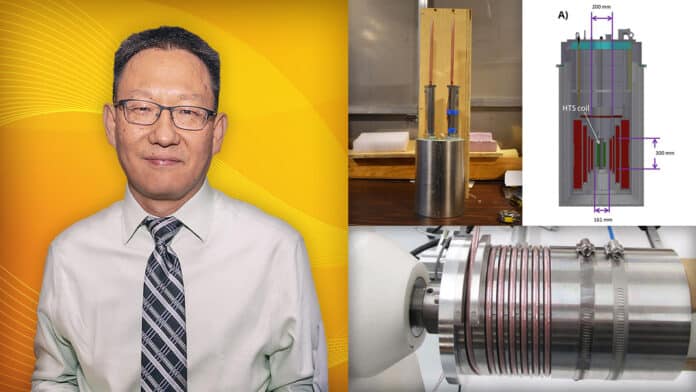Nuclear fusion promises a virtually limitless source of clean energy that, unlike fossil fuels, emits zero greenhouse gases and produces no long-life radioactive waste. Harnessing the power that makes the sun and stars shine could be made easier by powerful magnets with smaller, straighter shapes that have been made before.
Now, researchers at the U.S. Department of Energy’s (DOE) Princeton Plasma Physics Laboratory (PPPL) have found a way to build powerful magnets smaller than before, aiding the design and construction of machines that could help the world harness the power of the sun to create electricity without producing greenhouse gases that contribute to climate change.
The team found a way to build high-temperature superconducting magnets that are made of material that conducts electricity with little or no resistance at temperatures warmer than before. Such powerful magnets would more easily fit within the tight space inside spherical tokamaks, which are being investigated as a potential alternative to the more conventional doughnut-shaped tokamaks.
Researchers and engineers use these incredibly powerful magnets to control and maintain the hot plasma that fuels fusion reactions. The new magnet could be positioned apart from other machinery in the spherical tokamak’s central cavity, which means researchers could repair them without having to take anything else apart.
“To do this, you need a magnet with a stronger magnetic field and a smaller size than current magnets,” said Yuhu Zhai, a principal engineer at PPPL and lead author of a paper reporting the results in IEEE Transactions on Applied Superconductivity. “The only way you do that is with superconducting wires, and that’s what we’ve done.”
The magnets could also help scientists continue to shrink the size of tokamaks, improving performance and reducing construction costs. “Tokamaks are sensitive to the conditions in their central regions, including the size of the central magnet, or solenoid, the shielding, and the vacuum vessel,” said Jon Menard, PPPL’s deputy director for research. “A lot depends on the center. So if you can shrink things in the middle, you can shrink the whole machine and reduce cost while, in theory, improving performance.”
The new powerful magnets were designed using a technique refined by Zhai and researchers at Advanced Conductor Technologies, the University of Colorado, Boulder, and the National High Magnetic Field Laboratory, in Tallahassee, Florida. The technique means the magnets’ wires do not need conventional epoxy and glass fiber insulation to ensure the flow of electricity, allowing them the reduce the size and simplify construction. “The costs to wind the coils are much lower because we don’t have to go through the expensive and error-prone epoxy vacuum-impregnation process,” Zhai said. “Instead, you’re directly winding the conductor into the coil form.”
Moreover, “high-temperature superconducting magnets can help spherical tokamak design because the higher current density and smaller windings provide more space for a support structure that helps the device withstand the high magnetic fields, enhancing operating conditions,” said Thomas Brown, a PPPL engineer who contributed to the research. “Also, the smaller, more powerful magnets give the machine designer more options to design a spherical tokamak with geometry that could enhance overall tokamak performance. We’re not quite there yet, but we’re closer and maybe close enough.”
